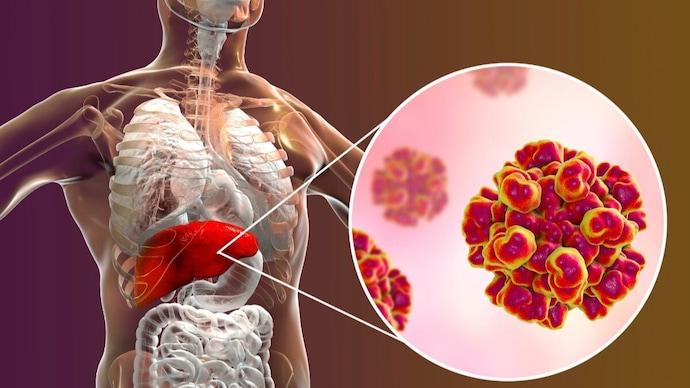
Study reveals these food sources could help treat fatty liver disease
Researchers found that resistant starch improves the microbiome in the intestines, keeping the liver healthy.

A recent study has suggested that for non-alcoholic fatty liver disease, the prebiotic 'resistant starch' could be a potential treatment.
Non-alcohol fatty liver disease (NAFLD) is a lifestyle disorder that affects millions across the globe. In India, as of 2022, approximately one in three adults or children have NAFLD.
NAFLD means that excessive amounts of fat are accumulated in the liver due to various lifestyle habits such as high consumption of fried food, leading to obesity and high cholesterol.
If the disease is ignored for a long period of time, it could lead to liver damage or liver cirrhosis (scarred liver and permanently damaged).
Researchers from the University of Jena, Shanghai Sixth People's Hospital Affiliated to Shanghai Jiao Tong University School of Medicine (SSPH-SJTUSM) and the Leibniz Institute for Natural Product Research and Infection Biology (Leibniz-HKI) found that a diet with resistant starch has positive influence on the liver.
In fact, the study, published in the Cell Metabolism, found that resistant starch improves the microbiome in the intestines.
Resistant starch is a type of carbohydrate that doesn't get digested in the small intestine. Instead, it ferments in the large intestine and feeds "good" gut bacteria. They are a type of complex carbs for which the body needs more energy to digest.
Some food sources of resistant starch are brown rice, beans, whole grain bread or pasta, quinoa, cashews, lentils, plantains, oats and potatoes.
"We found out that the participants in the study benefited from a resistant starch diet, as the accumulation of fat in the diseased liver was reduced. Furthermore, we observed an increase in certain types of bacteria in the gut of the participants. These bacteria positively influenced fat reduction and transport in the liver," said study leader Gianni Panagiotou, Professor at the University of Jena, Germany.
In addition, the author said that reduced NAFLD and inflammation biomarkers indicate the alleviation of liver damage.
Resistant starch consists of indigestible fibres, and thus, has a prebiotic effect on the gut. This means it increases the good bacteria in the gut.
"At the same time, the number of harmful bacteria decreases. This leads to a more balanced gut microbiome and has a positive impact on health," explained first author Yueqiong Ni.
Serum and faecal samples from 200 participants over a period of four months were examined by the researchers. They found that the level of "Bacteroides stercoris", in particular, increases significantly the more severe the disease is.
The researchers concluded that it is advisable to consume a fist-sized amount of 'healthy' carbohydrates naturally containing resistant starch, such as wholegrain cereals, legumes, green bananas, and starchy vegetables like potatoes at every meal to alleviate fatty liver.
Currently, the disease is classified as an epidemic by the World Health Organisation (WHO). The metabolic disorder can also aggravate diseases such as type 2 diabetes or cardiovascular diseases.
However, for affected patients, no drug therapy has yet been approved.

